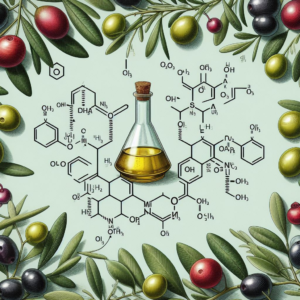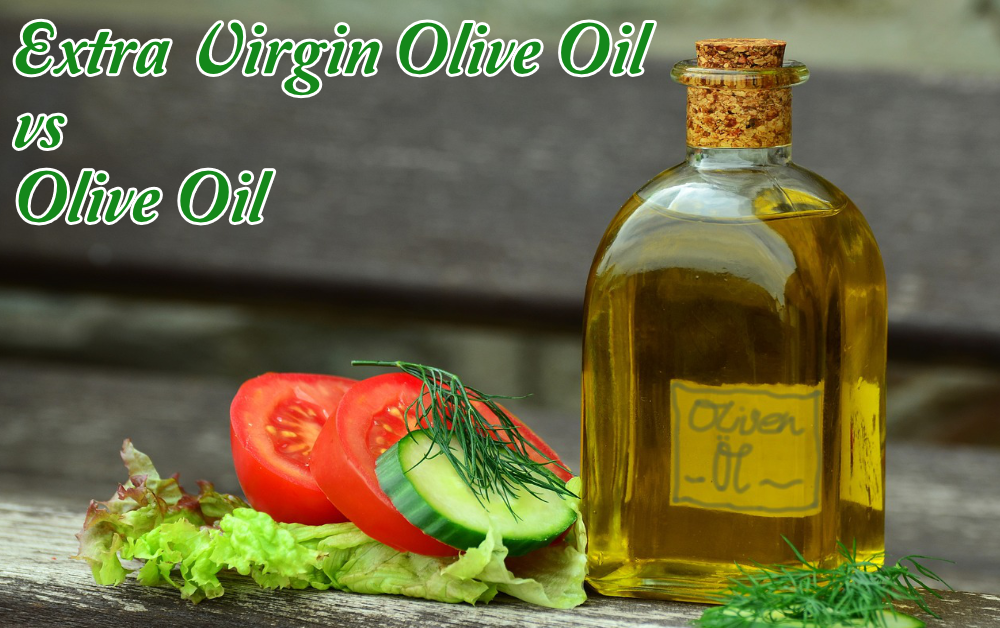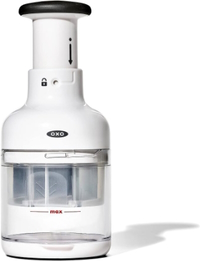Virgin olive oil stands as a cornerstone in the culinary world, but the debate between extra virgin olive oil vs olive oil continues to spark discussions among food enthusiasts and health-conscious individuals. In this blog post, we investigate into the differences in taste, production processes, nutritional attributes, and culinary applications of these two popular oils. Whether you’re a seasoned chef or a novice cook, understanding the nuances between extra virgin olive oil and olive oil will elevate your dishes and enhance your cooking experience.
Key Takeaways:
- Production Processes: Extra Virgin Olive Oil (EVOO) is produced from the first pressing of olives using only mechanical means, while Olive Oil is a blend of refined and virgin oils.
- Flavor Profiles: EVOO has fruity, peppery, and herbaceous notes with pungent sensations, while Olive Oil has a milder, more neutral flavor with slight bitterness.
- Nutritional Attributes: EVOO contains higher levels of antioxidants and oleocanthal, making it a healthier option compared to Olive Oil.
- Culinary Applications: EVOO is ideal for low-heat cooking, dressings, and finishing dishes, while Olive Oil is suitable for high-heat cooking and everyday use.
- Olive Oil vs. Seed Oils: Olive oil offers more nutritional benefits and a better flavor profile compared to common seed oils like canola, sunflower, and soybean oil.
- Why Choose EVOO: Extra Virgin Olive Oil is favored for its unique flavor, high nutritional value, versatility in cooking, association with Mediterranean cuisine, and growing availability and affordability.
What is Olive Oil?
Definition and Origin of Olive Oil
Olive oil is a staple in Mediterranean cuisine, prized for its rich flavor and numerous health benefits. It is produced by crushing the ripened fruit of the olive tree, a tree that has been cultivated for thousands of years. Historically, olive oil has been a crucial component of diets in regions such as Greece, Spain, and Italy, and its use dates back to ancient times.
Brief History of Olive Oil Production and Consumption
An integral part of Mediterranean culture, olive oil production has deep roots that trace back thousands of years. The olive tree, native to Asia Minor, spread throughout the Mediterranean basin, becoming a significant crop for many civilizations. The process of extracting olive oil has evolved over time, with techniques such as cold pressing now being preferred to retain the oil’s flavor and health benefits.
Chemical Composition of Olive Oil
Olive oil primarily consists of monounsaturated fats, which are known for their heart-healthy properties. It also contains antioxidants like polyphenols and vitamin E, as well as oleocanthal, a compound with anti-inflammatory effects. The composition of olive oil sets it apart from other cooking oils, making it a preferred choice for those seeking a nutritious option.
Olive oil is mainly composed of triacylglycerols, which are esters derived from glycerol and three fatty acids. The primary fatty acid in olive oil is oleic acid, a monounsaturated omega-9 fatty acid. The chemical structure of oleic acid is represented by the formula:
[ CH_3(CH_2)_7CH=CH(CH_2)_7COOH ]

Health Benefits of Olive Oil
Production Processes: Extra Virgin Olive Oil (EVOO) is known for its high antioxidant content and low acidity levels, making it a healthier option compared to regular olive oil. These properties contribute to various health benefits, such as supporting heart health and reducing inflammation. Incorporating olive oil into your diet can have a positive impact on overall well-being.
Culinary Uses of Olive Oil
Properties of Olive Oil: Olive oil is versatile in the kitchen, suitable for low-heat cooking, dressings, marinades, and finishing dishes. Its distinct flavor profile, ranging from fruity to peppery notes, enhances the taste of various dishes. Whether used in Mediterranean recipes or as a dip for bread, olive oil adds depth and complexity to culinary creations.
What is Extra Virgin Olive Oil?
Now, let’s investigate into the world of Extra Virgin Olive Oil (EVOO), the golden elixir cherished for its unparalleled flavor and health benefits. EVOO is the highest grade of olive oil, obtained through cold mechanical extraction without the use of chemicals. To earn the coveted title of “extra virgin,” the oil must meet stringent quality standards, including low acidity levels and exceptional taste profiles.
Definition and Certification of Extra Virgin Olive Oil
What sets Extra Virgin Olive Oil apart is its purity and quality. The production process of EVOO involves pressing olives within 24 hours of harvesting, ensuring the preservation of delicate flavors and aromas. To be classified as extra virgin, the oil must exhibit fruity, peppery, and herbaceous notes, along with a low acidity level (less than 0.8%). Certification bodies rigorously assess EVOO to guarantee its premium quality and authenticity.
Production Process of Extra Virgin Olive Oil
Virgin olive oil is considered the epitome of excellence among olive oils, characterized by its rich flavor profile and robust health benefits. The production process of Extra Virgin Olive Oil entails cold mechanical extraction, preserving the oil’s natural goodness and antioxidants. This meticulous process results in a superior oil with unmatched taste and nutritional value.
Virgin olive oil is a staple in Mediterranean cuisine, renowned for its distinct flavor and versatility in cooking. Whether drizzled over salads, used in marinades, or as a finishing touch on dishes, EVOO elevates the culinary experience with its unique aroma and health-enhancing properties.
Chemical Composition of Extra Virgin Olive Oil
Olive oil is rich in monounsaturated fats, antioxidants, and oleocanthal, making it a powerhouse of nutrients for heart health and overall well-being. The high levels of polyphenols and vitamin E in Extra Virgin Olive Oil contribute to its anti-inflammatory properties and disease-fighting capabilities.
Virgin olive oil is celebrated for its ability to lower cholesterol levels, promote cardiovascular health, and reduce the risk of chronic diseases. Incorporating EVOO into your diet not only enhances the flavor of dishes but also supports your quest for a healthier lifestyle.
Health Benefits of Extra Virgin Olive Oil
Health-conscious individuals prioritize Extra Virgin Olive Oil for its numerous benefits, including improved heart health, reduced inflammation, and enhanced antioxidant protection. Studies suggest that the Mediterranean diet, rich in EVOO, is linked to longevity and overall well-being.
Virgin olive oil is revered for its culinary versatility, adding depth and richness to a wide range of dishes. Whether used for sautéing, roasting, or as a base for dressings and sauces, EVOO enhances the taste and nutritional value of meals.
Rich in flavor and nutrients, Extra Virgin Olive Oil continues to reign supreme in kitchens worldwide, offering a combination of culinary excellence and health benefits that are unmatched by other cooking oils. Make EVOO a staple in your pantry to elevate your dishes and nourish your body with the goodness of quality olive oil.
Extra Virgin Olive Oil vs Olive Oil
Taste and Aroma Comparison
| Olive Oil | Extra Virgin Olive Oil |
| Comparatively smooth and mild flavor | Complex flavor profile with fruity, peppery, and herbaceous notes |
| Less distinctive taste due to refining process | Rich in flavors such as hints of green apple, artichoke, and grass |
Smoke Point and Shelf Life Comparison
| Olive Oil | Extra Virgin Olive Oil |
| Higher smoke point, suitable for high-heat cooking | Ideal for low-heat cooking and finishing dishes |
| Longer shelf life due to refining process | Shorter shelf life as it retains more nutrients and flavors |
When comparing the smoke points and shelf life of olive oil and extra virgin olive oil, it is important to consider the intended use in cooking. Olive oil may be better suited for high-heat methods, while extra virgin olive oil shines in dishes where its flavor can stand out.
Production Process Comparison
| Olive Oil | Extra Virgin Olive Oil |
| Blend of refined and virgin olive oils | Produced from the first pressing of olives, using only mechanical means |
| May undergo heat treatment or chemical refining | Extracted within 24 hours of harvesting to preserve delicate flavors |
To understand the differences between olive oil and extra virgin olive oil, it is important to grasp their distinct production processes. Extra virgin olive oil’s cold mechanical extraction ensures the preservation of delicate flavors and nutrients, setting it apart from regular olive oil.
Nutritional Profile Comparison
| Olive Oil | Extra Virgin Olive Oil |
| Rich in monounsaturated fats for heart health | Higher antioxidant content and lower acidity level |
| Lacks intense fruitiness and peppery notes | Contains more oleocanthal and polyphenols for anti-inflammatory properties |
Comparing the nutritional profiles of olive oil and extra virgin olive oil reveals the additional health benefits offered by the latter, including higher antioxidant content and anti-inflammatory properties due to its lower acidity level.
Price Point Comparison
| Olive Oil | Extra Virgin Olive Oil |
| Often more affordable than extra virgin olive oil | Considered a premium option, usually higher in price |
| Available in various grades and price ranges | Preferred for special occasions or when intense flavor is desired |
When considering the price point of olive oil and extra virgin olive oil, it is important to weigh the premium quality and health benefits of the latter against the affordability and versatility of regular olive oil.
Production Processes of Extra Virgin Olive Oil vs Olive Oil
Despite both olive oil and extra virgin olive oil being derived from the same source – olives, the production processes differ significantly. From harvesting and sorting to filtering and bottling, each stage plays a crucial role in determining the quality and characteristics of the final product.
Harvesting and Sorting of Olives
Virgin olive oil and extra virgin olive oil are distinguished by the meticulous process of harvesting and sorting the olives. For extra virgin olive oil, the olives must be carefully handpicked and sorted to ensure only the highest quality fruit is used in the extraction process. This attention to detail is important for maintaining the delicate flavors and aromas characteristic of extra virgin olive oil.
Crushing and Malaxation
Sorting the olives is followed by the crucial steps of crushing and malaxation. This process involves grinding the olives into a paste and then gently mixing to release the oil droplets from the pulp. The duration and temperature of malaxation play a significant role in determining the flavor profile and quality of the final oil.
Centrifugation and Decantation
Crushing the olive paste is followed by the separation of oil and water through centrifugation and decantation. This process helps to extract the pure oil from the paste, ensuring a clean and high-quality final product.
It is important to note that centrifugation and decantation are crucial steps in preserving the freshness and integrity of the olive oil. These processes help remove any impurities and excess moisture, resulting in a pure and flavorful oil.
Filtering and Bottling
Any remaining sediment or impurities are removed through filtering before the olive oil is bottled. This ensures that the final product is clear, free from debris, and retains its characteristic flavors and aromas.
The filtering and bottling stage is important for maintaining the quality and shelf life of the olive oil. Properly filtered and sealed bottles help preserve the freshness and integrity of the oil, allowing consumers to enjoy its full benefits.
Quality Control Measures
Olive oil production is subject to strict quality control measures to ensure that the final products meet the highest standards. From monitoring acidity levels to conducting taste tests, these measures are in place to guarantee the authenticity and quality of olive oil.
Another aspect of quality control measures is ensuring that the olive oil is produced using traditional methods that preserve the natural flavors and nutrients of the olives. This commitment to quality is what sets extra virgin olive oil apart from other types of oils and makes it a staple in kitchens around the world.
Nutritional Profile of Extra Virgin Olive Oil vs Olive Oil
Once again, the debate between olive oil and extra virgin olive oil extends to their nutritional profiles. Understanding the differences in their fatty acid composition, vitamin and mineral content, antioxidant levels, and caloric content can help in making an informed choice for cooking and health benefits.
Fatty Acid Composition
Composition of olive oil and extra virgin olive oil differ in terms of their fatty acid profile. Both oils are rich in monounsaturated fats, with extra virgin olive oil containing a higher proportion. The monounsaturated fats in olive oil are beneficial for heart health, lowering cholesterol levels, and reducing inflammation in the body.
Vitamin and Mineral Content
On the vitamin and mineral front, both olive oil and extra virgin olive oil offer similar benefits. They contain vitamin E, an antioxidant that helps protect cells from damage, as well as small amounts of vitamin K. Minerals such as iron and calcium are present in trace amounts. However, extra virgin olive oil typically retains more of these nutrients due to its cold-press extraction process.
Antioxidant Content
The antioxidant content of olive oil and extra virgin olive oil plays a crucial role in their health benefits. Extra virgin olive oil contains higher levels of polyphenols and vitamin E, which have anti-inflammatory properties and help in combating oxidative stress in the body. These antioxidants are more abundant in extra virgin olive oil due to its minimal processing methods.
Caloric Content
Plus, when it comes to caloric content, olive oil and extra virgin olive oil are both calorie-dense oils. However, the exact caloric values may vary slightly between the two. Olive oil typically contains around 120 calories per tablespoon, while extra virgin olive oil may have a similar calorie count. It’s imperative to use these oils in moderation to maintain a balanced diet.
Olive Oil vs Seed Oils
Comparison of Nutritional Profiles
| Olive Oil | Seed Oils |
| Rich in monounsaturated fats | Highly processed, containing trans fats |
| Higher in antioxidants | Lack antioxidants |
| Lower acidity level |
Comparison of Production Processes
| Olive Oil | Seed Oils |
| Produced from olives, using mechanical means | Often highly processed |
| Retains antioxidants and nutrients | Trans fats and lack of antioxidants |
For more information on the production processes, olive oil stands out for its natural extraction methods that preserve nutrients and antioxidants. In contrast, seed oils undergo extensive processing that may strip them of beneficial compounds.
Comparison of Culinary Uses
| Olive Oil | Seed Oils |
| Ideal for low-heat cooking, dressings, and finishing dishes | Suitable for high-heat cooking |
| Enhances flavors in Mediterranean cuisine | May become damaged when heated |
On the culinary front, olive oil’s delicate flavors are perfect for enhancing dishes, especially in Mediterranean cuisine. In contrast, seed oils may lose their nutritional value when exposed to high heat, making them less suitable for certain cooking methods.
Comparison of Price Points
| Processes | Price Comparison |
| Extra Virgin Olive Oil vs Olive Oil Production | Seed Oils vs Olive Oil Prices |
| Higher quality and stringent production methods | Vary in affordability but may lack nutritional benefits |
Another aspect to consider is the price points of different oils. While olive oil may come at a higher initial cost, the health benefits and culinary advantages it offers make it a valuable investment compared to seed oils that may lack the same level of quality and nutritional content.
Summing up
So, when it comes to the ongoing debate between extra virgin olive oil vs olive oil, it ultimately boils down to personal preference and intended use. Extra virgin olive oil, with its robust flavor, higher nutritional content, and delicate aroma, is ideal for drizzling over salads, dipping bread, and adding a finishing touch to dishes. On the other hand, regular olive oil, while less flavorful and refined, is more suited for everyday cooking tasks such as sautéing and frying. It’s vital to consider the production processes, flavor profiles, health attributes, and culinary applications of each type of oil to make an informed choice based on your needs and preferences.
Both extra virgin olive oil and olive oil have their own unique characteristics and benefits, making them valuable assets in the kitchen. Whether you prefer the bold taste of extra virgin olive oil or the milder flavor of olive oil, incorporating these healthy fats into your cooking can enhance the flavors of your dishes and contribute to a Mediterranean-inspired diet. Whichever option you choose, make sure to store your olive oil properly to preserve its quality and maximize its shelf life. The debate may continue, but with the knowledge of these distinctions, you can confidently navigate the world of olive oil with ease.





